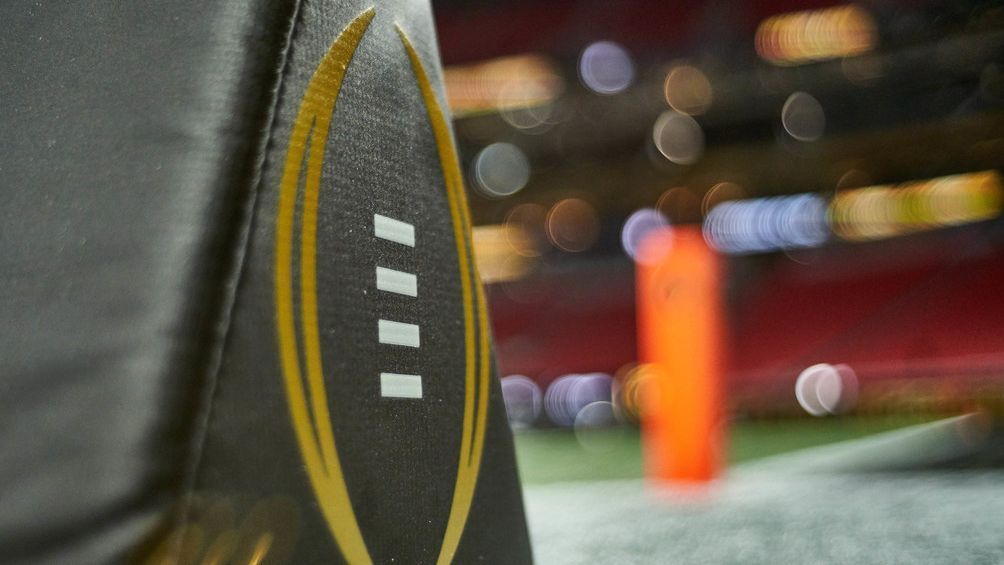The College Football Playoff board of managers is expected to vote on Feb. 20 on a model that would include the five highest-ranked conference champions and the next seven highest-ranked teams in the 12-team playoff this fall — a format change that could finally get the unanimous backing it needs if the Pac-12 agrees to it.
The Pac-12, which has dwindled to Washington State and Oregon State after drastic conference realignment, has been the lone holdout in the process, as it has asked for time to sort through its legal issues and discuss future CFP revenue with the board. Speaking candidly to ESPN on Tuesday about the Pac-12’s role in the future format, Washington State president Kirk Schulz, who represents the Pac-12 on the board, said, “the expectation is to hold a vote.”
“I believe there’s a sense of, ‘We’re hearing you guys out like you asked for, the legal stuff has been largely settled in the Pac-12 conference. It’s time to move forward,'” said Schulz, who spoke favorably of the 5+7 model but cautioned not to make any assumptions.
Mississippi State president Mark Keenum, the chair of the CFP’s board of managers, told ESPN he anticipates “we’ll have this issue resolved one way or another.”
“I think it’s a forgone conclusion from people in your profession, and where I sit and all across the college football landscape that there’s an anticipation we’ll have the 5+7,” he said. “Just a few months from now we’ll be playing the playoff. Everyone needs to know what the format is. I hope we as a board can come to a resolution on this issue, for sure.”
The 5+7 model, which the commissioners proposed in response to the sweeping realignment that left college athletics with four “power” conferences, was presented to the presidents and chancellors in November for their approval. It was discussed again at their annual meeting before the national championship game in Houston. At the time, Schulz asked the board to delay any vote on future football formats until the Pac-12 was certain about “what it wanted to ask for moving forward.”
Next Tuesday’s virtual meeting will give Schulz an opportunity to formally present the league’s requested revenue distribution in the next CFP contract. For the next two years, which is the remainder of the CFP’s current 12-year contract, Washington State and Oregon State will each continue to receive the full Power 5 revenue distribution, which is between $5-6 million per school. They are asking to continue to receive that amount in the next CFP contract not knowing what their conference affiliation will be.
“We know we will get feedback,” Schulz said, “and I also anticipate at that meeting there will be a vote called as a separate item on the playoff format and us and Oregon State at that time will have come to consensus on what our position will be, and we’ll be ready to vote at that time.”
While Schulz declined to say how the league might vote, he said he fully understands that the 5+7 model will benefit Washington State and Oregon State more than the initial 6+6 model because neither school can qualify for an automatic bid as a conference champion in each of the next two seasons. The Pac-12 and Mountain West have agreed to a temporary scheduling partnership in which Oregon State and Washington State will play at least six MWC opponents in 2024.
“For our two schools in the Pac-12 as it’s currently configured, there is no question that five-seven, with seven at-larges is better than six at-larges,” Schulz said. “That’s part of the discussion we’re having within the conference footprint — or the two schools — is that very point. There’s no question our football coaches are going to want to compete for one of those seven slots and seven is going to be better than six.”
Schulz said he views the revenue distribution as a separate conversation from the 5+7 model, and he’s not trying to use one to influence the other.
“We’ve got to be a good colleague in the college football world,” he said. “We asked for the opportunity to have a hearing on [revenue distribution], that was granted. We have to be really careful about saying, ‘If you don’t give us exactly what we’ve asked for, we’re gonna hold up some other things.’ The decision has to be one made by us and Oregon State and we’re still going through that decision-making process leading up to that meeting next week. There’s no assumption to be made that we have to get X to get Y, either way.”
According to the Pac-12’s proposal, which Schulz shared with ESPN, Oregon State and Washington State are asking for “a distribution share and voting rights equal to the lowest per school pro rata share of the ACC, Big 10, Big 12, or SEC conference’s distribution, regardless of how those four conferences actually distribute CFP distributions to their members.”
The request would be considered “null and void if the Pac-12 dissolves, WSU and OSU join one of the aforementioned conferences, or the right is waived.”
“We were in a game of musical chairs and the music stopped and we had two schools standing,” Schulz said. “We’ve invested and been considered Autonomy Five school and conference for decades. We just don’t think that because of the musical chairs that the two remaining schools in the Pac-12 should be penalized.”
Keenum said none of the conferences know yet what the revenue distribution will be in the next contract.
“We’ve got to be a good colleague in the college football world. We asked for the opportunity to have a hearing on [revenue distribution], that was granted. We have to be really careful about saying, ‘If you don’t give us exactly what we’ve asked for, we’re gonna hold up some other things.’ The decision has to be one made by us and Oregon State and we’re still going through that decision-making process leading up to that meeting next week. There’s no assumption to be made that we have to get X to get Y, either way.”
Washington State president Kirk Schulz
“None of us do,” he said. “There’s a lot of work that’s going to have to entail on behalf of our commissioners and others to bring some recommendations to the board. They’re not there. We’re not there. I hear what he’s saying, but I don’t know you commit to a school.”
Presidents and chancellors representing each of the 10 FBS conferences and Notre Dame have the ultimate authority over the playoff. Keenum told reporters last month he was confident the 5+7 model would eventually be approved, but Schulz said none of his peers put any undue pressure on him.
“Nobody’s called me and angrily or anything like that,” Schulz said. “I think I appreciate the fact that people said, ‘OK, we understand you guys have been through hell for the last six months on everything. Take your time to be ready, but this can’t last for months.’ And so I appreciate that.”
One option the Pac-12 is considering for its future is a reverse merger with the MWC, which would add all of the teams from that league into the Pac-12 without any exit fee. Schulz said if that were to happen, he’s not sure how the CFP would view the league, which would essentially be a Group of 5 conference with a Power 5 label.
“That would be an interesting debate on where an entity like that would exist in the hierarchy,” he said. “Obviously we would argue that it should still be considered an autonomy five conference. I can see other people saying it should not be considered that. That’s a debate for a different day that will certainly be lively and if that comes to transpire an awful lot of contentious discussion.”
Schulz said the gap between the Big Ten, SEC and everyone else “is only getting wider,” but that also makes those two conferences best positioned to “really influence decision-making.”
The Big Ten and SEC recently partnered to form an advisory group, and their commissioners, Tony Petitti and Greg Sankey, have been closely aligned on weighty issues impacting the future of collegiate athletics.
“We need really good, strong collaborative leadership,” Schulz said. “I’m probably glass more half full on this than I am half empty. There’s always some fear if I’m not in that room, am I being left out — by anybody, not just me or the Pac-12 — but is somebody else going to be making decisions that have a big impact on me? But I think right now we need those two conferences to roll up their sleeves and I’m going to assume they’re going to want to work with everybody else. I’m going to have the benefit of the doubt now. Let’s see what those two conferences working together come up with.”

